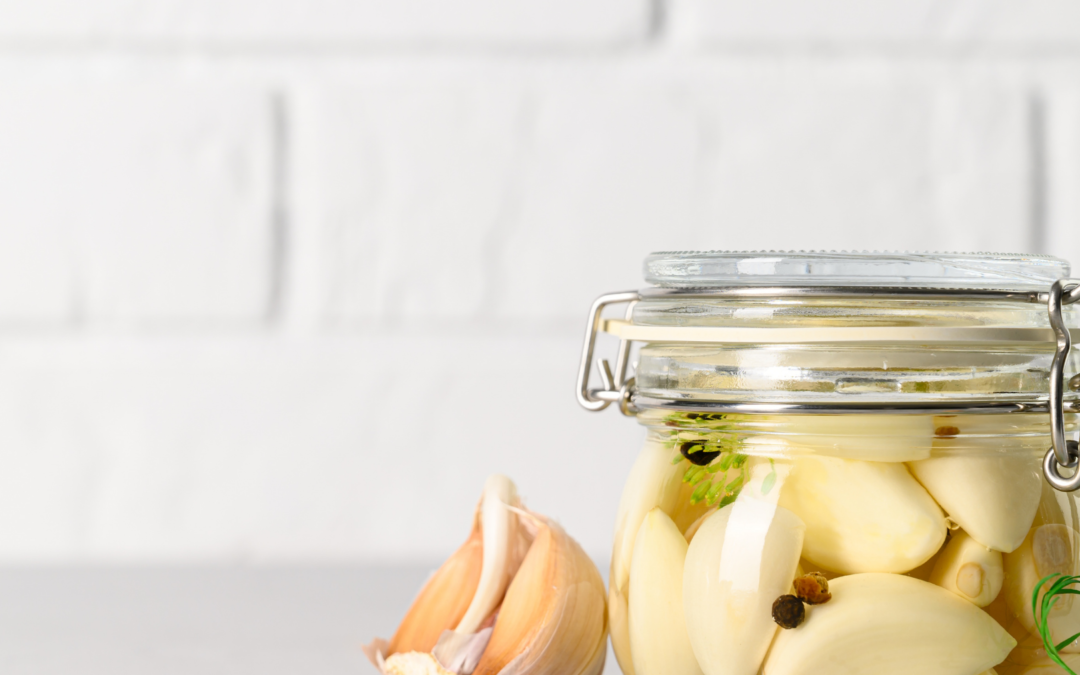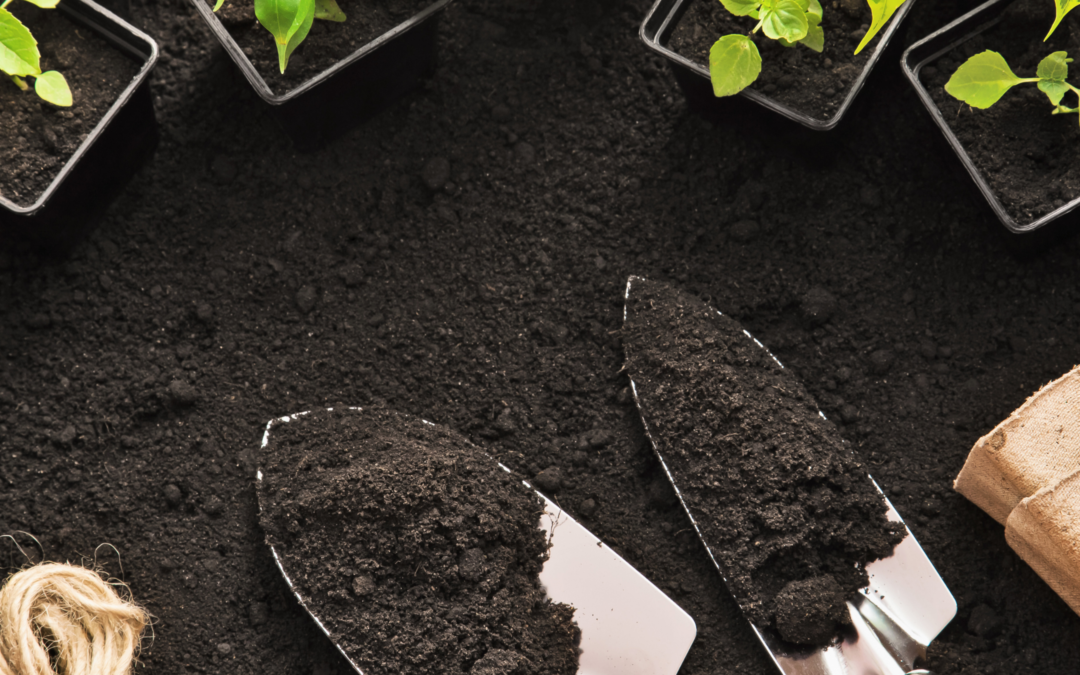
Top 5 Reasons To Grow Garlic
If you ask someone who grows garlic, they’ll tell you that garlic is one of the greatest gifts you can pull from your garden. Not only are they incredibly easy to grow but they multiply and store extremely well, giving you unlimited garlic year after year. Why would someone want unlimited tasty, health benefiting, organic, garlic? We thought you might ask. Here are the top 5 reasons you might want to consider growing garlic this season, before it’s too late.
1.) Garlic is Medicine

Throughout history garlic has been famously used to fight and prevent illnesses. When crushed, chopped or chewed it’s able to release many healing properties including Sulfur, Allicin and A-allyl cysteine (1). Low in calorie, garlic is also a strong source of vitamin B6, Vitamin C, Selenium and Manganese (2).
Where Garlic Can Heal
Used as a topical rub it can be used to treat fungus, bug bites and warts. When eaten raw it prevents and reduces colds by boosting immunity. As an oil extract, garlic can reduce inflamed joints and muscles by massaging the treated area. As a supplement in any form, garlic has been known to cure lung infections, blood pressure and more. More importantly, homegrown garlic has been proven to have higher levels of Allicin which produces all the health benefiting properties in garlic.
2.) Homegrown Garlic Is Better Than Store Bought

It’s not often, if ever at all that you walk into a grocery store with isles of garlic to choose from. In most grocery stores, you get to choose from jarred garlic or a single selection of garlic bulbs. When you stop to think about how many different types of recipes require garlic, you might want to shop for the best one for your dish. Each variety of garlic offers it’s own flavor profile to keep your recipes from all tasting the same.
Garlic Scapes
Not to mention garlic scapes! As pictured above, the garlic scape is a delicious stem that looks similar to a long bean. With an asparagus texture and scallion flavor, garlic scapes are produced from hardneck garlic. You can cook garlic scapes in recipes, on it’s own or eat raw. Garlic growers world wide choose hardneck garlic for their delicious garlic scapes, which you just don’t get in the store.
Garlic Varieties
|
Name: |
Flavor: |
Per bulb: |
Size: |
Use: |
Notes: |
|
Strong, Fiery |
5-7 Cloves |
Large |
Sautéing, Roasting |
Strong, long-lasting heat. One of the hottest hardneck varieties |
|
|
Strong, Fiery |
7-10 Cloves |
Large |
Tomato Sauces, Hearty Soups, Slow Cooker Chilli |
Fiery flavor that mellows out to a rich garlic aftertaste |
|
|
Strong, Spicy |
5-7 Cloves |
Large |
Garlic Rich Dishes, Mashed Potatoes, Roasted |
Great full-bodied and long-lasting flavor. Stores very well |
|
|
Strong, Robust |
5-7 Cloves |
Medium |
Pesto, Sautéed Vegetables, Sauces, Marinades |
Great for roasting. Stores very well. Grows great in northern locations |
|
|
Medium, Strong |
7-12 Cloves |
Medium |
Raw, Curries, Pickled, Dried |
Great flavor. Easy to peel. Cold hardy. |
|
|
Strong, Hot |
5-7 Cloves |
Large |
Raw, Salads, Dressings |
Cold Hardy, vigorous grower and long lasting in storage. |
|
|
Rich, Medium |
8-16 Cloves |
Small, Medium |
Baked, raw, salads, salsa |
Milder flavor when baked. Colorful. |
|
|
Medium, Strong |
4-7 Cloves |
Large |
Roasted, Caramelized, gamey meats, vinaigrettes, infused oil |
Cold hardy. Very hot when eaten raw. Great for roasting. |
|
|
Strong, Hot |
5-9 Cloves |
Large |
Greek marinades, mashed potatoes, cream sauce |
Mild flavor when stored. Great for roasting/cooking |
|
|
Rich, Spicy |
8-9 Cloves |
Medium |
Cold pasta, salsa, salad dressing |
Rich complex flavor, long-lasting taste. Excellent for cold climates. |
3.) Garlic Is Easy To Grow

After a beautiful summer of gardening, you can clean up your garden beds and leave them empty until spring or you can keep planting! Garlic is one of the best ways to use space in your garden that isn’t going to be used over the winter. They’re a great fall bulb that you can plant four weeks before the ground freezes. They don’t take up much space and they’re ready to harvest late spring/early summer!
How To Plant Garlic:
1.) Break bulbs into individual cloves. Make sure cloves are hard and solid. Plant larger cloves as they will produce larger bulbs – you can use the smaller cloves for dinner!
2.) Plant root plate end down, 3 inches deep, in well-drained soil.
3.) Add organic matter/ manure or mulch on top. Raised beds are recommended, as soil should be well draining. Spacing of at least 5 inches on 1-foot rows will provide adequate sunshine, any extra spacing will allow bulbs to grow larger.
4.) Keep soil moist.
4.) Garlic Is Best Fermented

Fermented garlic (also known as black garlic) is the process of storing your garlic with herbs, salt and water in a cold place for an extended amount of time. Because garlic is a perennial that multiplies, you can expect to have a lot of it. Fermenting garlic is not only a great way to use all your garlic without any waste, but it’s also delicious and healthy! Studies show that fermenting garlic creates enhanced bioactivity, which allows us to function better. Black garlic benefits many different functions in our bodies such as; Antioxidation, Antiallergic, Antidiabetic, Anti-inflammation, Anticarcinogenic (3).
How to Make Black Garlic:
1.) Peel as many garlic cloves as you wish to store.
2.) Fill your mason jar with the peeled cloves. Leaving 1 inch space at the top.
3.) Create your brine by adding water, 2 tablespoons salt and any additional herbs of your choice (fresh oregano, basil, pepper or pickling spice).
4.) Store your garlic in a cool, dark place for 3-6 weeks. TIP: Opening the jars once a day is a method called “burping” used to get rid of carbon dioxide.
5.) Once completed, store in the fridge! The longer the fermentation the better the taste!
Once ready, you can use your Black garlic to add to soups, dips, marinades, dressings, to treat ailments and more!
5.) It’s Hard To Get Organic Garlic

How well do you know your average grocery store garlic? Do you know where it comes from? Or, how it got there? For most, it’s just cheap and easy to get. The organic conscious consumer might be surprised to learn that over 90% of garlic is produced in China (4). Meaning that getting garlic into our grocery stores isn’t only environmentally harmful, but it’s also costly. This has lead to the price of garlic increasing substantially.
Careful of Bleach
Back to our organic conscious consumer, garlic isn’t as bright white and perfect as you might think. Unlike what you’ll find in a grocery store, garlic is naturally very spotty and marked. Yet, it’s picture perfect appearance is achieved by using a toxic bleaching technique used to extend shelf life. Unfortunately, even when indicated that it is “organic” chances are that it is not which only takes a quick trip to Dr. Google to learn more about (5).
What Do You Think?
Ask anyone who grows garlic and they’ll tell you it’s healthier, it’s easy, it tastes better and it’s addictive! At Wildwood Outdoor Living Centre, we have over 40 years of garlic experience. Need help choosing the right variety or have questions? Reach out to us any time, we’re happy to help you grow!

(1) https://www.healthline.com/nutrition/11-proven-health-benefits-of-garlic#TOC_TITLE_HDR_3
(2) https://www.bbcgoodfood.com/howto/guide/ingredient-focus-garlic
(3) https://www.webmd.com/diet/fermented-garlic-health-benefits#1
(4) https://www.wsj.com/articles/heres-something-that-stinks-high-garlic-prices-11582196400
(5) https://www.google.com/search?q=bleached+garlic&oq=bleached+garlic&aqs=chrome..69i57j0i512l2j0i22i30l2j0i390.7903j0j4&sourceid=chrome&ie=UTF-8





